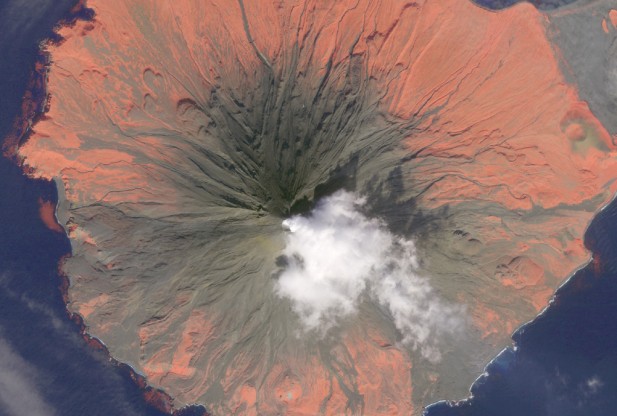
© 2010 – GeoEyeThis GeoEye IKONOS image shows a faint plume issuing from Cleveland Volcano at 2:31 PM on September 14, 2010. Red in this image highlights areas of vegetation detected by the near-infrared channel.
The two-month long, low-level eruptions occurring at a volcano in Alaska's Aleutian Islands have volcanologists worried that there could be a larger eruption forthcoming, Yereth Rosen of Reuters reported on Friday.
The volcano causing concern is Cleveland Volcano (also known as Mount Cleveland), a 5,676-foot peak located less about 940 miles southwest of Anchorage.
As
previously reported here on RedOrbit, an eruption warning was issued by the Alaska Volcano Observatory in late July.
At that time, the Daily Mail warned that Cleveland Volcano "could be poised for its first big eruption in ten years," and that experts believed that it could "erupt at any moment, spewing ash clouds up to 20,000 feet above sea level with little further warning."
Nearly eight weeks later, such an eruption remains a definite possibility.
"The big thing we're concerned about is an explosive eruption," Steve McNutt of the University of Alaska Fairbanks, a coordinating scientist for the observatory, told Rosen.
Such an eruption, the Reuters reporter says, could come with "little warning." Satellite imagery has reportedly shown a lava dome growing inside the volcano's crater, and the observatory has reports that Mount Cleveland continues to generate heat. To date, there have been no signs of ash clouds, Rosen said, but those, too, could come with little warning.

